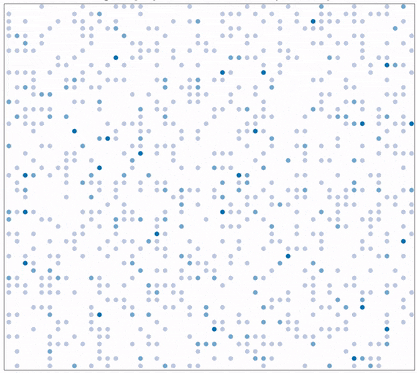How much will ice sheets change in the future? How did they change in the past?
As ice sheets melt, global mean sea level rises. However, the rate at which ice sheets will melt in the future is uncertain, due to our poor understanding of ice sheet processes, but also the unpredictable fluctuations in the climate. In our group, we are working on projects that span the very theoretical: which processes drive the range and spread of uncertainty in future sea level projections (figure below), to more applied: how can we make the best estimates of sea level rise uncertainty using computationally expensive models and how do we bridge the gap between global scale sea level rise projections and community-scale flooding estimates. We also develop tools to estimate what ice sheets looked like in the past and quantify the role of humans in causing past changes. To do so we work with computer scientists, physicists, and engineers to understand what sea level information is needed by decision-makers and how we can provide the most robust estimates.

Funded Project: The Ice Sheet State Estimation (ICESEE) Project
Funded Project: The Antarctic Ice Sheet Large Ensemble (AISLENS) Project
Funded Project: The Stochastic Ice Sheet Project (StISP)
Where does meltwater go on the surface of ice sheets?

On top and underneath ice sheets, melting ice produces water, which flows across and down through the ice and the bed below. The way in which this water interacts with the flow and fracture of ice has important implications for the future evolution and stability of ice sheets. However, the climatic and geological conditions which initiate and control the rate of this ice sheet decline are not well understood. Work from the Ice & Climate group has shown the importance of collective behavior of draining melt ponds on ice shelves (animation right) using ideas from statistical physics.
Funded Project: Model of Antarctic Ice Shelf Surface Hydrology and Stability (MONARCHS)
Publication: “A speed limit on ice shelf collapse through hydrofracture”, Geophysical Research Letters, Robel & Banwell, 2019.
Do glaciers “feel” icebergs after they break away? How much ocean heat finds its way into glacier ice?
 Ice sheets in contact with water lose ice through melt by the ocean and iceberg fracture/calving. Ocean-driven glacier melt is a complex process involving small-scale processes occurring within centimeters of the ocean interface with ice. Calving is likely influenced by many factors within and outside of ice sheets, including the presence of sea ice within densely packed icebergs floating in the ocean, known as “mélange” (see animation above). The rate of ice flow towards the ice-ocean interface is influenced by a wide range of processes including subglacial hydrology and the bumpy topography of the solid Earth. We are working on understanding all of these fundamental physical processes occurring near this critical interface using simple and complex models, mathematical theory, and novel laboratory experiments.
Ice sheets in contact with water lose ice through melt by the ocean and iceberg fracture/calving. Ocean-driven glacier melt is a complex process involving small-scale processes occurring within centimeters of the ocean interface with ice. Calving is likely influenced by many factors within and outside of ice sheets, including the presence of sea ice within densely packed icebergs floating in the ocean, known as “mélange” (see animation above). The rate of ice flow towards the ice-ocean interface is influenced by a wide range of processes including subglacial hydrology and the bumpy topography of the solid Earth. We are working on understanding all of these fundamental physical processes occurring near this critical interface using simple and complex models, mathematical theory, and novel laboratory experiments.
Publication: “Layered seawater intrusion and melt under grounded ice”, The Cryosphere. Robel, Wilson, Seroussi, 2022.
Funded Project: The Glacier-Ocean-Melange model (GLACIOME)
Funded Project: Revisiting the theory of ice-ocean interactions through novel experiments and models